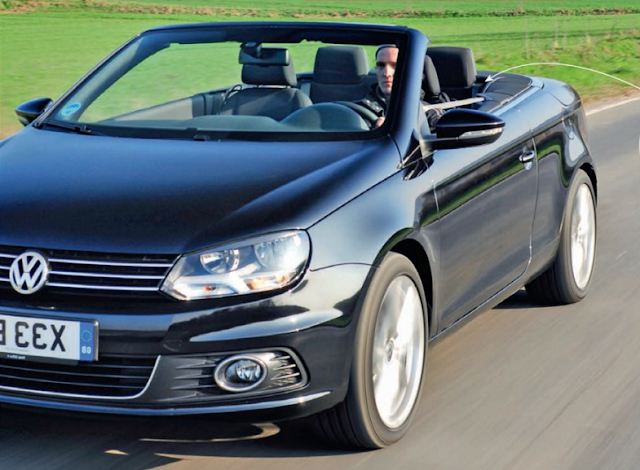what car Volkswagen Eos review
the Volkswagen Eos is a member of that select group of hatchback derived coupé-cabriolets that graced the noughties and included the Ford Focus, Vauxhall Astra, Peugeot 308 and Renault Mégane. Of them all, though, the Eos was the poshest, a status reflected in its higher price.
Fortunately, since production ceased in 2014, its prices have fallen to the extent that you can pick one
up for around £700, although at that level you want to be sure the model’s temperamentalroof works. Prices peak at around £14,000 for a 2014-reg 2.0 TDI with 20,000 miles. That seems a lot for a car that is based on the old Golf Mk5 and went out of production 10 years ago, so we’d settle for something in between, such as a facelifted, 2011-reg 1.4 for around £7500.
The Eos was launched in 2006 and lauded for its spacious 2+2 cabin, roomy boot(at least until the folded roof occupied most of it) and good handling. However, the highest praise was reserved for stiff
bodyshell and a metal-folding roof that incorporates a sliding sunroof. Buyers were never short of engines to choose from. From launch to that 2011 facelift mentioned earlier, there was a 113bhp 1.6 FSI(underpowered for the heavys), a 147bhp 2.0 FSI, a 197bhp 2.0T-FSI(one of the best and in Sport trim only) and a 3.2V6 producing 247bhp that makes a good, relaxed cruiser.
Note the emphasis on petrol engines there. The lone diesel was a 138bhp 2.0 TDI. The thing is if
you want a good selection of petrols to choose from, a pre-facelifts is where to look because of the diesel didn’treally catch on. From the 2011 facelift, it was all change, with the market favoring the torquey 138bhp 2.0 TDI at the expense of the new 121bhp 1.4 TSI, the 158bhp 1.4 TSI with turbocharger and supercharger(it’s the most rounded) and the 208bhp 2.0 TSI from the Golf GTI.
With the facelift, the Eos also acquired a simpler but smarter grille and a restyled bonnet and wings.
At the back, the comical round tail-lights were given the heave-ho in favor of slimmer, more toned-down affairs. Versions with leather trim gained a new finish capable of reflecting the sun’s rays.
The popularity of the diesel version after 2011 is a clue to the model’s appeal to business users, so check the one you’re looking at hasn’t been flogged and neglected. In any case, it’s a EU5 engine so subject to creeping emissions penalties and tougher MOT tests.
Really, you want to find one of the petrol models but avoid the earlier 1.6 FSI. And if you must have the DSG auto, ensure you opt for the facelift model, when the ’box was improved.
(Earlier ones must have their oil changed every 40,000 miles or else.)
Apologies for what follows… but find a good one and an Eos, the Greek goddess of dawn, could be the dawn of a new era in your motoring.

Comments
Post a Comment